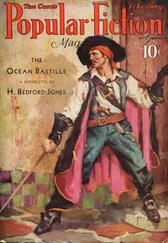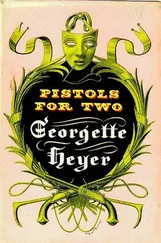The following weekend the youths sped past in their convertible, and T., the captain of the high school baseball team and a local slugger of some renown, swung at the box from a standing position in the back seat. With the bat moving at more than seventy-five miles per hour relative to the car, and the car itself traveling nearly as fast, the combined velocity of the impact was approximately 150 miles per hour. It was at this speed that the bat ricocheted and struck the head of J., a seventeen-year-old girl who had been sitting in the car, killing her instantly.
A series of criminal charges and civil suits followed. T. was tried as an adult and convicted of involuntary manslaughter. The driver of the car was sentenced to community service on charges of vandalism and reckless endangerment. The farmer was also convicted of reckless endangerment and fined; in response he sued the police department for failing to address the problem beforehand. The parents of the dead girl lobbied to have all the car’s living occupants, five in all, expelled from school; they also sued T., the driver and the farmer for several million dollars. They even tried, and failed, to sue the hardware store where the farmer had bought his cement-mailbox supplies, arguing that the store’s employees ought to have figured out what the farmer was doing, and stopped him. In a peripheral case, T.’s parents sued the hospital where he was treated for a broken arm; apparently the doctors there had set the break improperly, resulting in a painful re-setting that was likely to ruin T.’s chances to play baseball in the major leagues. Their lawyers demanded a percentage of T.’s projected future salary.
In the end, all judgments were reversed on appeal. It seemed that everyone involved was to blame, which the courts determined was no different from no one being to blame. All that remains, apart from the many legal debts incurred by the litigants and the accused, is the cement mailbox, which has proven too costly and cumbersome to remove.
A local teenager was caught spray-painting on an abandoned railroad bridge above a busy two-lane highway. Her graffito, which had nearly been finished when she was apprehended, read: TRUST JESUS.
When her case came before our judge, he asked the teenager why she had done what she did. She apologized, telling him that she “thought it would help.” When he asked what it would help, the teenager had no answer, and only reiterated her original statement.
The judge levied a five-hundred-dollar fine and sentenced the girl to repaint the entire bridge, even the portions she had not defaced. Those who suggested to the judge that this was an extreme punishment were met with angry stares.
For some weeks after the ruling, the girl could be seen suspended on a platform above the road after school, painstakingly erasing her original handiwork. She has become something of a local hero and is said to be considering a run for a seat on the town council. Meanwhile, the repainted bridge has become a prime target of vandals, and is now covered with vulgarisms and rude slogans.
While eating lunch at a restaurant in the city, I paused to visit the men’s room. I like to wear loose-fitting, comfortable pants, and I had discovered that, when I pushed them down to use the toilet, my wallet often slipped out onto the floor. Consequently I developed the habit of removing the wallet from my pocket before I sat down and resting it on the edge of the sink, to protect it from contact with filth. On this particular occasion, since the sink was out of reach of the toilet, I set the wallet on a child’s high chair the management had stored in a nearby corner. When I was through I pulled up my pants, washed my hands and departed, leaving the wallet behind.
Ten minutes later I finished eating and offered to buy my companion, an old friend, his meal. It was then that I discovered my wallet was missing. Immediately I remembered where I had left it and went to the men’s room to retrieve it. But by now the wallet was gone.
My friend, a keen observer of men, provided an enticing clue. Only one person had entered the men’s room after me, and he had been carrying a hammer. Armed with this evidence, we approached the restaurant’s owner and told him that my wallet had been taken by a man carrying a hammer. To our surprise, the owner told us that this man was named Kevin, he was a handyman and had been doing repairs in the kitchen.
When my friend and I insisted that it was Kevin, then, who had my wallet, the owner shook his head. He refused to give us Kevin’s last name or address, and maintained that Kevin would never do such a thing. He was honest, the owner told us, and would have turned in the wallet had he found it, but Kevin had done nothing of the sort.
Dejected, I left my friend’s phone number, imploring the owner to ask Kevin if he had found any “lost” items in the men’s room. The owner promised to do so, but I had little hope, and my sympathetic friend agreed to put me up for the rest of my stay in the city, and lent me enough money to enjoy myself.
Thus resigned, I was shocked when Kevin called me at my friend’s apartment that night to report that he had the wallet. He explained that he owned a leather-bound notebook that he carried with him on the job, which he used to jot down his ideas and inspirations. This notebook was identical in appearance to my wallet. Apparently he did the same thing I did in men’s rooms to keep the notebook clean. What Kevin found extraordinary was that he had forgotten, on this particular day, to bring his notebook to work, an omission he could not recall ever having made before, and this happened to be the same day he found a wallet that looked just like it, sitting in exactly the place he would have put it, had it been his notebook. He wondered aloud if the wallet/notebook shape had some deeper significance, some mystic connection to the place he had found it in, and if some greater power had forced me to leave the wallet, as a stand-in for his notebook. That said, he agreed to leave the wallet at the restaurant the next morning, and when I went to pick it up I found it at the counter, its contents fully accounted for. I never met Kevin.
In the car home from the city I wondered, in the wake of his cryptic comment, what ideas and inspirations the handyman might be writing down in his notebook, and what might have caused him to forget it while I was in town.
In my second year of high school, I attempted, along with two other boys, to drive mad a fourth boy, L., who was the shyest and most awkward member of our small group of social outcasts. The three of us called ourselves the ITO, or Independent Terrorists’ Organization, and tortured L. in a variety of ways, including the mailing of anonymous threats, the vandalizing of his car, the dedication to him of hit songs on the local FM radio station, and all manner
of obscene and disruptive telephone calls. We invited him to meet us in the middle of a park, arrived early, deposited at the meeting place a cardboard box containing a cow’s heart with his name seared into it with a soldering iron, then hid in some nearby trees and took surveillance photos of the event, which photos we subsequently mailed him; we set afire in his yard a small but extremely detailed effigy of him that we had constructed from chicken wire and papiermâché and soaked in kerosene; we issued an invitation to a nonexistent formal party at the home of a girl he secretly loved, which he dutifully attended, carrying a bouquet; we placed an order at the drive-up window of the fast food restaurant where he worked and came to the pick-up window in a borrowed car, wearing plastic Richard Nixon masks. Though our true identities could never have been far from his discovery, he never accused us, as we three were his best, if not only, friends; and in fact he confided his anxieties to us, and we dutifully promised to help him identify his torturers and punish them in some way once they were unmasked.
Читать дальше










